Table of Contents
Barcelona is full of energy — food, architecture, street life — it moves fast.
So why would anyone slow down for a surrealist artist known for melting clocks and strange dreamscapes?
Because Salvador Dalí also didn’t follow the rules.
And somehow, that fits perfectly in this city.
While Dalí’s main museum is up in Figueres, there’s a smaller but powerful collection right here in the heart of Barcelona. It’s less known, but just as bizarre, personal, and deeply… Dalí.
If you’ve never seen his work in person, prepare to be confused in the best way. You won’t just look at paintings — you’ll step into them. Some pieces pull you into a dream. Others make you laugh out loud because they’re just so weird. And somehow it all feels intentional.
Dalí didn’t care about being “nice.” He cared about impact.
And this dalí museum barcelona captures that spirit — in a setting that feels raw and curious rather than polished and perfect.
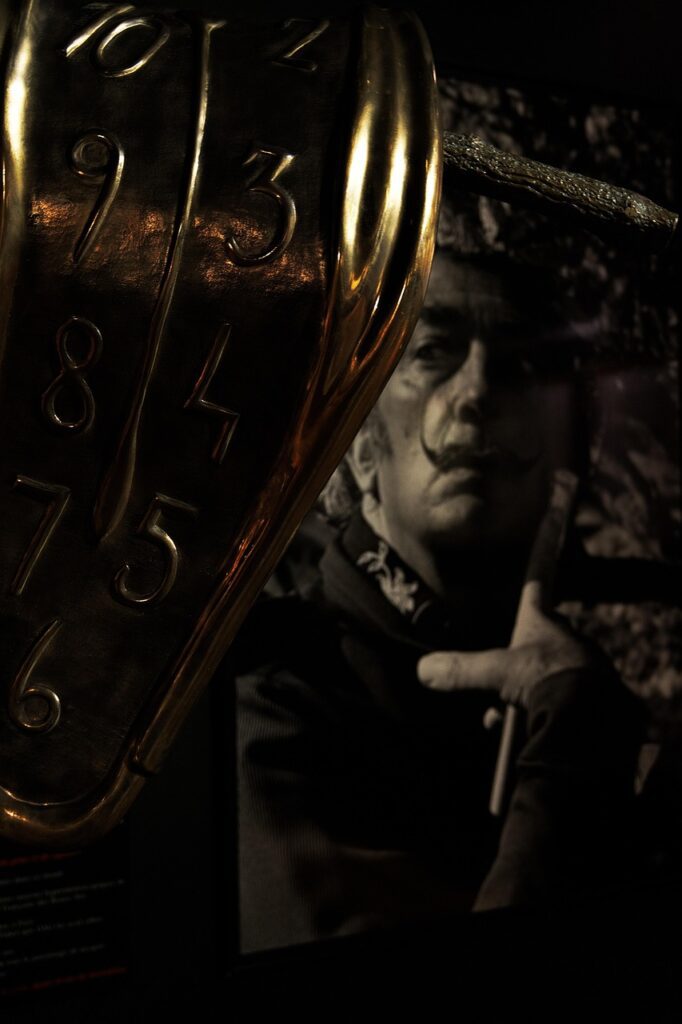
What makes this museum different is its focus.
It’s not just a history lesson or a dusty tribute. It’s part of a bigger art center — and it blends Dalí’s personality into modern Barcelona’s creative pulse. It’s loud. It’s bold. And yet, it feels surprisingly quiet inside.
For anyone into offbeat travel moments — or just tired of standing in line at more “obvious” spots — this is a perfect side-step. A way to explore something intense without the chaos.
If you’re planning to visit the Dalí Museum Barcelona, don’t expect a normal museum visit. Expect surprise. Expect a little discomfort. And expect to leave with questions you didn’t know you had.
That’s kind of the point.
What Is the Dalí Museum Barcelona All About?
So first off — no, this isn’t the big museum in Figueres. That’s the massive, world-famous one where Dalí’s buried.
But the Dalí Museum in Barcelona?
It’s something else entirely. Smaller, sure. But weird in a quieter way.
You’ll find it inside the Reial Cercle Artístic — a historical art institution right in the Gothic Quarter. It’s central, a little hidden, and not nearly as hyped as other museums in the city. Which is kind of the point.
You walk in, and suddenly it’s like Dalí decided to throw a private party — and only invited the strange parts of your imagination.
Some exhibitions rotate. Others stay put. But the vibe is always surreal. You don’t just see his work. You feel it. There’s sculpture, drawings, and odd pieces that don’t quite explain themselves. That’s Dalí. He doesn’t explain. He just shows you something and lets your brain do the rest.
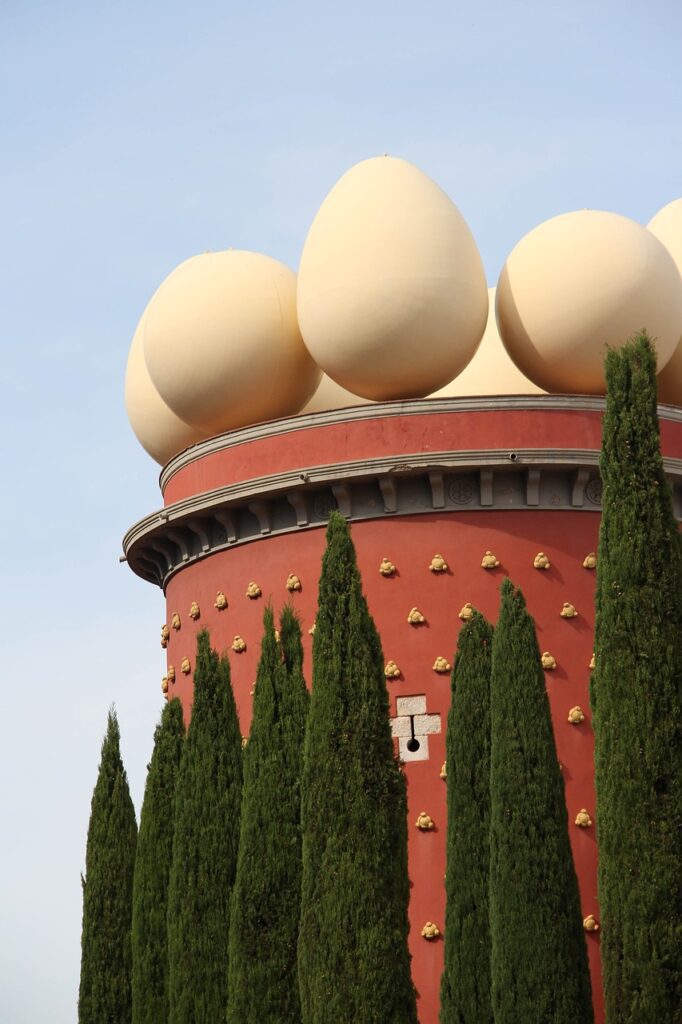
If you’ve never been to this part of town, the setting makes it even better. The Gothic Quarter isn’t quiet — but stepping into this museum sort of pulls you out of the noise. It’s dark, detailed, and oddly peaceful.
And don’t expect tons of labels or perfectly explained rooms. That’s not the style here.
You get fragments. You get vibes. You get Dalí being Dalí — unapologetic, clever, and a little bit out of his mind.
If you’re already planning your Dalí Museum Barcelona trip, just know:
It won’t feel like the rest of your itinerary. And that’s exactly why you should go.
What You’ll Actually See Inside the Dalí Museum Barcelona
Walk in. Look around.
You’ll probably blink a few times.
The dalí museum barcelona doesn’t ease you in. It drops you straight into Dalí’s headspace — no warning, no roadmap. And honestly, that’s the best part.
There’s no huge hall or grand opening moment. Just narrow rooms, strange light, and work that seems to breathe a little if you stare too long.
You’ll see drawings. A lot of them.
Fast, sharp pencil lines that feel urgent. Some look unfinished — maybe they are. But that’s kind of the magic. It feels like you caught him mid-thought.
Then there’s the sculpture.
Some pieces are smooth and shiny. Others? Sharp, uncomfortable. One has this weird tension, like it’s trying to stretch itself out of shape.
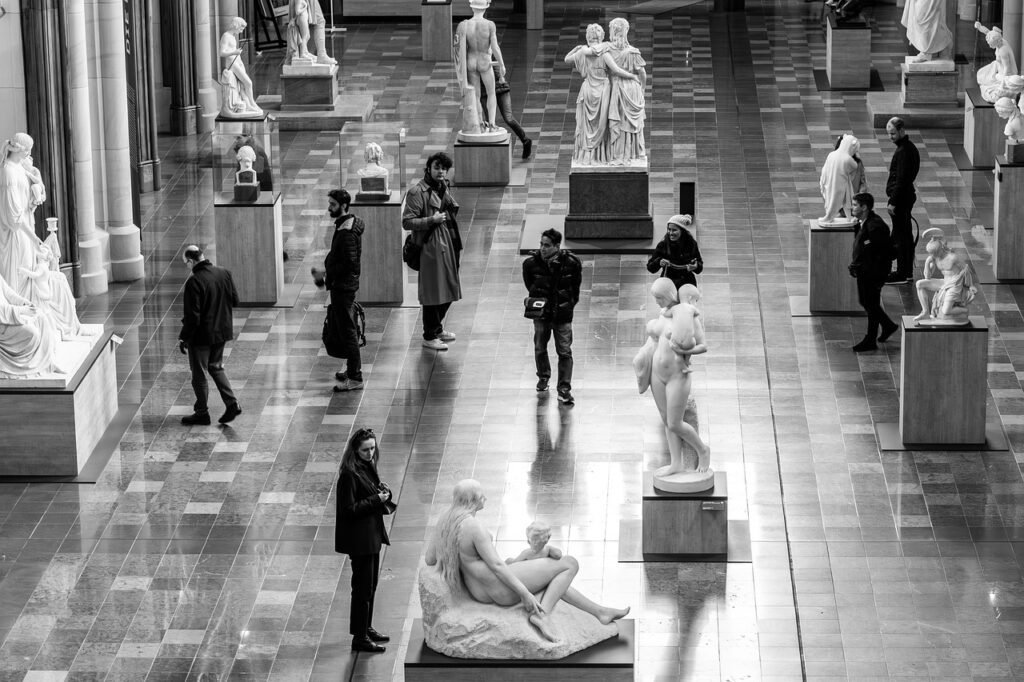
The setup’s tight. No long explanations. No big signs.
You’re meant to feel your way through. Some things are funny. Some are flat-out disturbing. Most land somewhere in between.
And the best part? It doesn’t tell you how to feel.
The dalí museum barcelona trusts you to figure it out — or not.
The strange thing is how long this stuff sticks with you.
You’ll walk out and still be thinking about that one painting.
Or the sculpture that looked like it was melting and laughing at the same time.
You’ll wonder, “Was that genius… or nonsense?” And you won’t really know.
But you’ll care.
And that’s not nothing.
Most people say the same thing on the way out — “Well, that was different.”
And it is.
The dalí museum barcelona doesn’t feel like other museums. It’s not clean and tidy. It’s not trying to “educate” you in the usual way.
It just puts the weird stuff out there and lets you deal with it.
There’s also this quiet feeling in the space. Even when there are people around, it doesn’t get loud. It feels like you’re part of something… private.
Like you’re hearing someone whispering from inside the art.
It’s emotional in a way that’s hard to explain.
You won’t find long lines of people posing with selfie sticks.
You’ll find people standing still, hands in pockets, eyes slightly squinted.
You’ll find people leaning in close — trying to figure out why a man would paint an egg inside a clock inside a desert.
And really, that’s the win.
This isn’t the kind of place where you walk out with a perfect summary.
You walk out with feelings you can’t quite name — and that’s probably exactly what Dalí wanted.
How to Get Dalí Museum Tickets in Barcelona
So — tickets.
Yes, you need one. No, it doesn’t have to be a hassle.
For the dalí museum barcelona, you’ve got two options: buy online or just show up. Both work. But if you hate waiting, book ahead.
Online is easy. You pick a time slot, pay, and walk in with a QR code on your phone. Done.
Plus, some sites — like the official Reial Cercle Artístic portal — offer discounts or let you bundle with other exhibitions in the building.
If you’re more of a “let’s see how the day goes” type, door tickets are usually fine.
Just don’t go mid-Saturday and expect zero line. Morning is better. Weekdays are best.
Price? Around €12–14.
Less than a meal. And honestly, worth every cent just to step into Dalí’s head for an hour.
Students, seniors, and residents usually get a couple euros off. Kids? Often free if they’re under 12, but always double-check before banking on that.

This isn’t one of those museums where tickets vanish weeks in advance.
But still — if you know you’re going, grab them online.
Saves time. Saves energy. Gets you to the weird stuff faster.
What about free entry?
Not common here.
The dalí museum barcelona doesn’t usually offer free days like some larger public museums do. But it’s worth checking in once in a while — especially around major holidays or during city-wide cultural events.
You can always look for updates on the official Dalí Foundation site, where they list any special exhibitions, discounts, or museum-related news.
Now — let’s talk timing.
Best time to go? Morning.
Right after opening, you get quieter rooms, more time to breathe, and a better rhythm. Afternoons tend to get busier, especially if school groups or tourists swing by.
Late afternoons are okay too — but give yourself at least an hour.
Some people speed through. Others linger. Either way, you want enough time to let it all hit.
One more tip?
Don’t rush in and out.
Sit for a minute before you leave. Let your eyes adjust to the real world again. Because walking out of the dalí museum barcelona can feel like waking up from a vivid, slightly unhinged dream.
And honestly — that’s what makes it memorable.
Practical Visitor Info: What You Need to Know Before You Go
Let’s keep this real.
If you’re heading to the dalí museum barcelona, here’s what’s useful to know — without turning it into a checklist.
Opening Hours
Most days, the museum opens around 10 in the morning and stays open until evening.
It’s not 24/7. And it doesn’t shout about special hours, so it’s a good idea to double-check online if your visit lands on a holiday.
Where It Is
Right in the Gothic Quarter.
Not hidden, but not screaming for attention either.
The museum sits inside the Reial Cercle Artístic.
Not a huge place. But the contrast between the quiet building and what’s inside? That part’s interesting.
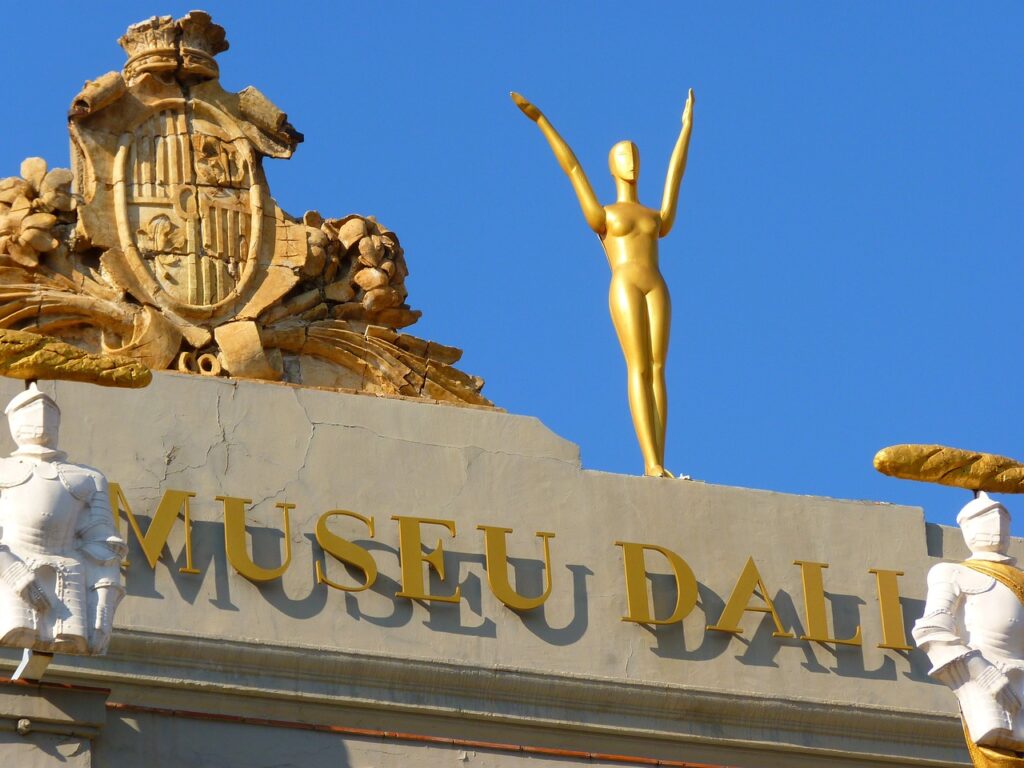
Here’s the full address:
Carrer dels Arcs, 5
08002 Barcelona
It’s walkable from most places downtown.
And the streets around it? Kind of a bonus on their own.
Getting There
Hop off at Liceu (L3) or Jaume I (L4) if you’re taking the metro.
From there, you’re five to ten minutes away — depending on how easily you get distracted by bookshops and balconies.
How Long You’ll Need
Most people stay about 45 minutes.
Long enough to feel it. Short enough to leave you wanting more.
There’s no set route. No guide to follow. You just move through.
Best Time to Go
Morning works. Midweek is better.
If the sky looks grey and your feet are tired, this is a solid place to slow things down.
And when you leave the dalí museum barcelona?
You might feel a little off-balance — but in a good way.
Why Dalí’s Art Still Feels So Modern
You’d think it might feel outdated.
Surrealism? Melting clocks? Isn’t that old news?
But here’s the weird thing — it doesn’t feel old at all.
If anything, it feels like he’s still ahead of everyone else.
Inside the dalí museum barcelona, you don’t just see paintings from the past. You see ideas that feel like they belong to the present — or maybe even the future.
There’s no clear message in most of his work.
It’s messy. Open-ended.
One person sees a dream. Another sees a joke. Someone else sees nothing. And somehow, they’re all right.
That space for interpretation — it’s what makes it feel fresh.
Like the art isn’t stuck in one meaning, or one time.
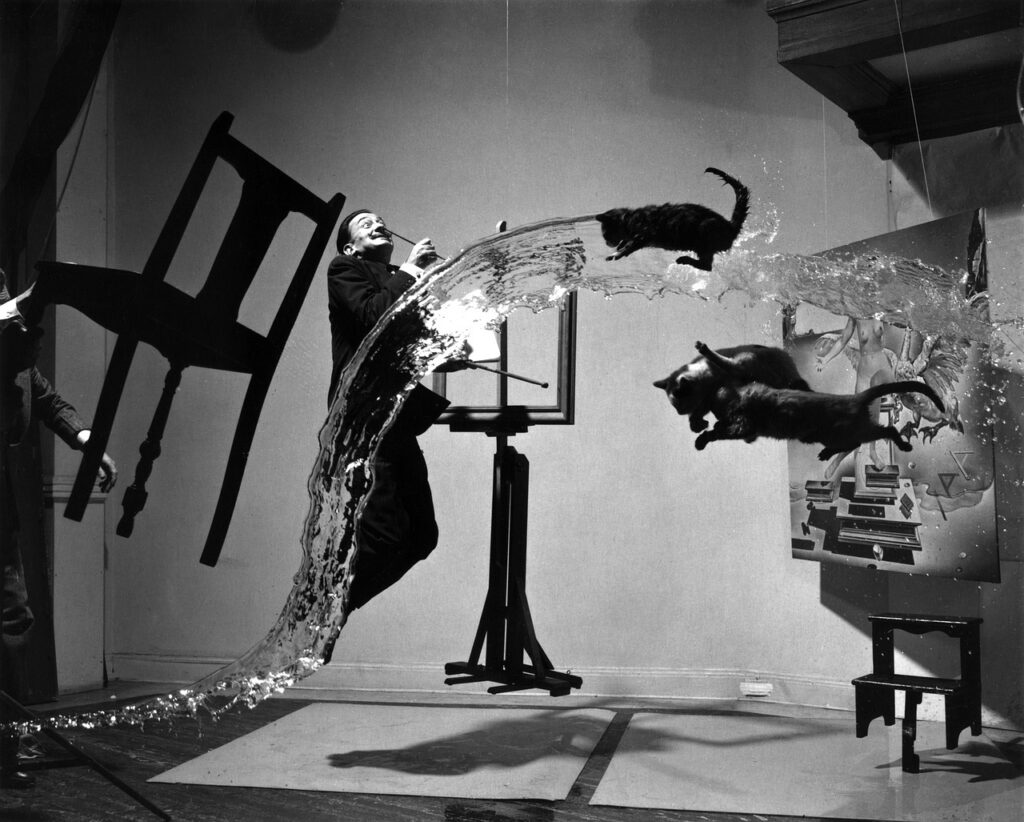
And then there’s the way he mixes things.
Dalí used classical technique — stuff you’d see in Renaissance paintings — and then twisted it into something strange. He was playful with form, but precise with skill.
You can tell he knew exactly what he was doing, even when it made no sense.
There’s something brave in that.
He wasn’t trying to please anyone. He was just chasing ideas that didn’t sit still.
Part of it is just… Dalí himself.
He wasn’t quiet. He wasn’t humble.
He painted, performed, filmed, sculpted, spoke in riddles, wore strange clothes, and said strange things — and somehow, it all connected.
There’s this mix of chaos and control in his work.
One minute, you’re looking at something delicate and detailed. The next, it’s completely unhinged. That tension never really lets go.
And that’s why it still works.
We’re surrounded by noise now — constant images, opinions, contradiction.
Dalí’s work was that noise… before the noise was even a thing.
At the dalí museum barcelona, you can feel that.
It’s not just about what he made — it’s about how much of himself he put into it.
You don’t leave thinking, “That was technically impressive.”
You leave thinking, “Who was this guy?”
And somehow, that curiosity lingers. You go home and start Googling old interviews. You look up his quotes. You remember the piece with the egg. Or the ant. Or the eye.
That kind of impact? It’s rare.
Most artists make things. Dalí made you feel like you’re part of the thing.
And that’s why — even today — his work still hits.
Harder than expected. And in ways you didn’t quite see coming.
Other Must-See Art Museums in Barcelona
Barcelona isn’t short on creativity.
If you’ve just come out of the dalí museum barcelona and feel like diving deeper into the city’s art scene, you’re in luck. There are a handful of museums that offer totally different perspectives — from abstract minimalism to classic masters.
Here are a few worth checking out:
Museu Picasso
This one’s a no-brainer.
The Museu Picasso gives you access to over 4,000 works by Pablo Picasso — many from his early years. What’s interesting here isn’t just the art, but the journey. You see how he evolved from a classically trained painter into the bold, experimental force most people recognize today.
The museum is housed in five connected medieval buildings in El Born, and the setting itself is beautiful.
Go early in the day if you want a quieter visit — it gets busy.
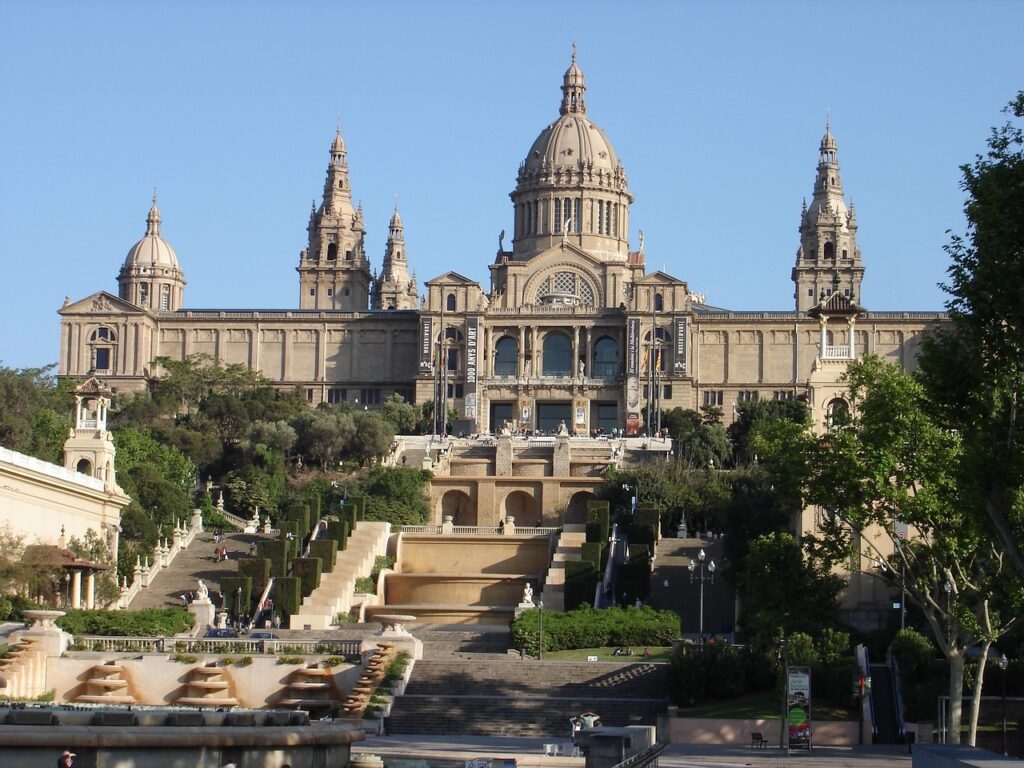
MACBA – Museu d’Art Contemporani de Barcelona
If you like things that make you ask, “Wait… is that art?” — this is your spot.
MACBA focuses on contemporary and experimental work. Think video installations, neon lights, strange objects in giant white rooms. It’s not for everyone, but if you’re into bold ideas and cultural commentary, it delivers.
Also: the building itself is a modernist landmark, and the open plaza outside is packed with skaters, students, and street photographers. Even if you don’t go inside, the vibe around it is worth experiencing.
MNAC – Museu Nacional d’Art de Catalunya
Want something more classic?
Head to MNAC, located inside the Palau Nacional up on Montjuïc.
It’s home to an incredible collection of Romanesque murals, Gothic art, and Catalan modernism — plus some serious architecture.
And the views from the front steps? Unreal. You get a panorama of the city that’s worth the visit on its own.
Barcelona’s art world is layered.
Some museums are loud and strange. Others are quiet and traditional.
But together, they tell a story — not just of styles and techniques, but of how this city thinks and feels.
If you want the full picture, this list is just the start.
For more inspiration, check out my guide to top tourist attractions in Barcelona — it includes more cultural gems you might not have heard of yet.
Final Thoughts: A Different Kind of Museum Visit
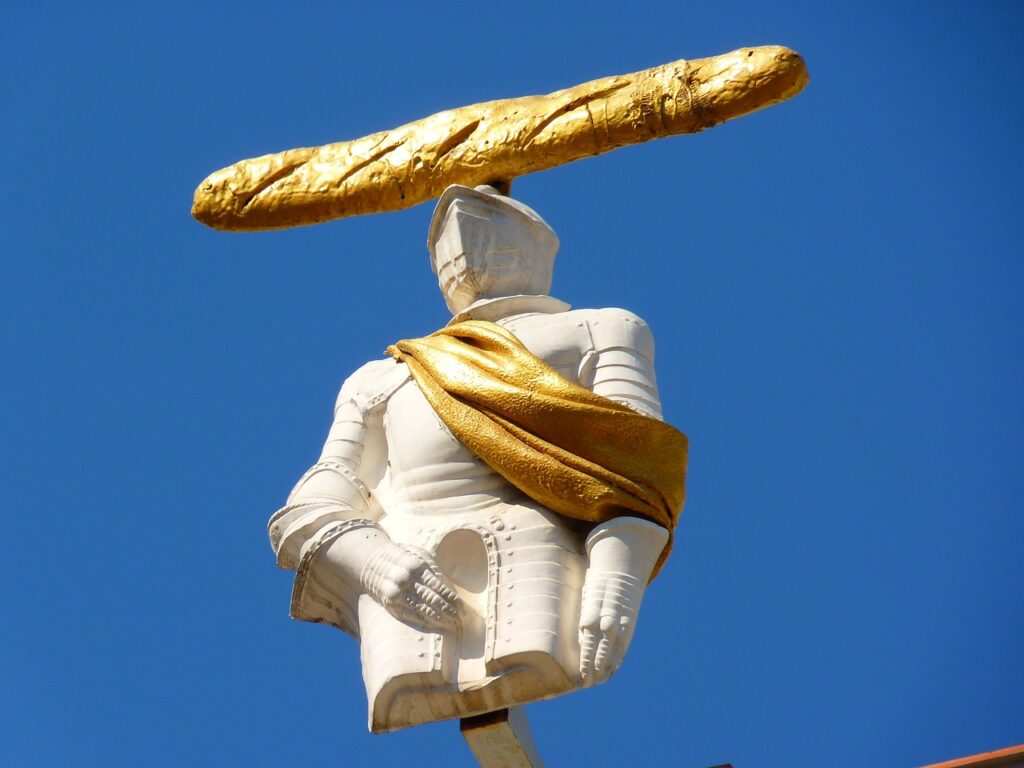
Barcelona is full of big names.
Gaudí. Picasso. The cathedral. The beach.
You know what to expect — mostly.
But then there’s something like the dalí museum barcelona, and suddenly the trip feels different.
It’s small. Quiet. Off to the side.
No massive crowds. No checklist feeling.
And yet, you leave with more questions than answers — in the best possible way.
Dalí didn’t want to be understood, not completely.
He played with meaning, with form, with you.
And somehow, that’s what makes the experience feel personal. Like you were part of it, even just for a little while.
I didn’t expect to remember this place as clearly as I do.
But even days later, I found myself thinking about the weird bronze shapes, the soft shadows, the strange layout of the rooms.
Not because they made sense — but because they didn’t.
That’s the part I like most.
It doesn’t explain itself. And it doesn’t care if you try to make it neat.
If your trip to Barcelona is mostly booked out with sights and tours, this place can be the pause in between.
The thing that reminds you why travel is more than photos and plans.
If you’re still piecing your trip together, I’ve put together a full Barcelona Travel Guide to help with neighborhoods, timing, and small tips that’ll save you time and money.
For the more classic sights and stops, check out my list of Barcelona’s top tourist attractions — it’s packed with easy wins.
But keep a little room for the unexpected.
That’s usually where the good stuff hides.
Thanks for reading this blog post, i wish you a great day.
/Thomas
FAQ Dalí Museum Barcelona
Is there a Dalí museum in Barcelona?
Yes. It’s not huge, but it’s right in the Gothic Quarter. The dalí museum barcelona is easy to miss if you’re not paying attention. It’s kind of hidden — but when you find it, it pulls you in quick. Feels more personal than some of the bigger museums.
Is the Dalí museum in Spain worth it?
If you’re into strange, surreal stuff — then yes, no question. It’s not a “perfect” museum, but that’s part of why it works. The one in Barcelona doesn’t try too hard. It just shows you Dalí without explaining too much. And that’s enough.
How many Dalí museums are there in Spain?
Three. Figueres is the main one — that’s the big deal. Then there’s his house up the coast. And the dalí museum barcelona, which is easier if you’re already in the city. Each one feels different. Like different versions of the same mind.
Where can I see Dalí paintings in Spain?
Most of them are in Figueres. But you’ll see plenty at the dalí museum barcelona, too. Smaller stuff. Sketches. Sculptures. Things that feel more intimate. Some national galleries in Madrid have one or two, but they’re scattered.
Where is the biggest Dalí museum in the world?
That’s Figueres. Hands down. Dalí built it himself — or at least helped design it. It’s a full-on experience. But if you’re short on time, Barcelona’s version gives you enough to get a sense of him. Without the long train ride.
How long is the Dalí experience?
Not long. Most people stay 40 to 60 minutes. Depends on how you move through it. It’s not massive, but there’s a lot to look at. You’ll know when you’ve had enough. No pressure.
Where is Dalí buried?
Under the stage in his museum in Figueres. That place is like a performance, even in death. Barcelona isn’t where he’s buried, but it still has his energy. Just… quieter.
How many Dali museums are there in the world?
Four main ones. Three in Spain. One in Florida. That one’s huge, but very American. The dalí museum barcelona feels more grounded — like it belongs to the city around it.

